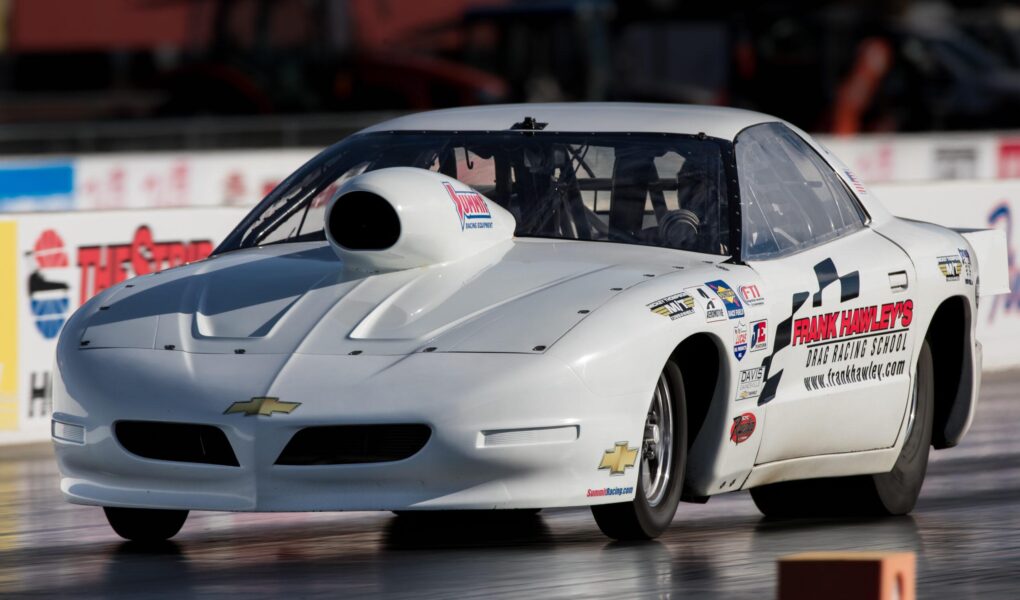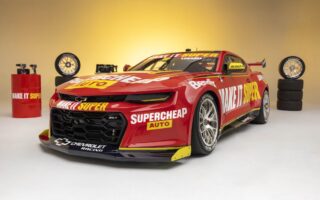Title: The Thrill of Super Gas Drag Racing: Where Speed Meets Precision
In the world of motorsports, few activities embody the raw power and exhilarating speed quite like drag racing. Among its myriad formats, Super Gas drag racing stands out as a captivating blend of skill, strategy, and sheer adrenaline. Each event transforms the racetrack into a theater of precision, where drivers meticulously calibrate their machines for a split-second advantage. With a unique set of rules that balance speed with a demand for accuracy, Super Gas is not just about crossing the finish line first; it’s about mastering the art of timing, reflexes, and the delicate dance between man and machine. As we dive into the captivating realm of Super Gas drag racing, we explore its origins, the intricacies of its competition, and the passionate community that fuels its vibrant culture.
Table of Contents
- The Evolution of Super Gas Drag Racing Techniques
- Maximizing Performance Through Vehicle Modifications
- Understanding the Essential Rules and Regulations
- Strategies for Success on the Super Gas Circuit
- Q&A
- Wrapping Up
The Evolution of Super Gas Drag Racing Techniques
The dynamic landscape of Super Gas drag racing has witnessed notable advancements since its inception. Initially defined by basic setups and amateur techniques, competitors now harness sophisticated technologies and meticulous tuning processes to gain that crucial edge. Key innovations in engine performance, aerodynamics, and weight reduction have transformed traditional approaches into high-stakes science. Some of the most impactful techniques include:
- Electronic Fuel Injection (EFI): Enhances fuel delivery precision.
- Data Logging Systems: Helps racers analyze performance metrics in real-time.
- Aerodynamic Modifications: Reduces drag through improved body designs.
As racing strategies have evolved, so too have the vehicles themselves, with chassis and suspension systems receiving upgrades to cope with staggering speeds. The emphasis on consistency has led many teams to adopt predictive modeling and simulation tools that allow for fine-tuning before race day. This meticulous approach has fostered the adoption of best practices that are now industry standards, which include:
- Weight Distribution Optimization: Ensures better traction and stability.
- Tire Selection and Management: Plays a vital role in maximizing grip during launch.
- Reaction Time Techniques: Training and practice drills focus on starting line reflexes.
| Technique | Description |
|---|---|
| Turbocharging | Increases engine power output significantly. |
| Weight Reduction | Utilizes lightweight materials for faster acceleration. |
| Launch Control | Optimizes the initial acceleration phase for quicker starts. |
Maximizing Performance Through Vehicle Modifications
When it comes to super gas drag racing, optimizing your vehicle’s performance is an art and a science. Aerodynamics play a significant role; therefore, consider investing in a lightweight hood and a smooth front fascia to reduce drag. Suspension tuning offers another avenue for improvement. Adjusting the ride height and damping can enhance handling and traction, allowing you to take tight turns and achieve better launch times. Key modifications include:
- Lightweight wheels to reduce unsprung weight
- High-performance tires for optimal grip
- Custom exhaust systems to improve airflow
In addition to physical upgrades, engine tuning is crucial for maximizing horsepower. A standalone engine management system can help you fine-tune fuel maps and ignition timing for better performance under race conditions. Regular maintenance and upgrades to systems such as the fuel pump and injectors can ensure that your engine performs at its peak. Consider the following modifications for the engine:
| Modification | Benefit |
|---|---|
| High-flow air filter | Increased airflow for better combustion |
| Tune-up kit | Improved ignition efficiency |
| Performance camshaft | Enhanced power output |
Understanding the Essential Rules and Regulations
Participating in super gas drag racing requires a solid understanding of the specific rules and regulations that govern this thrilling motorsport. Vehicle specifications are crucial, as they dictate what modifications are permissible for your racing car. For instance, they often stipulate weight limits, engine size restrictions, and allowed modifications to ensure a level playing field. Additionally, drivers must familiarize themselves with safety regulations, which encompass everything from helmet requirements to the use of harnesses and roll cages. Compliance with these guidelines is not optional; it’s essential for both safety and competitive integrity.
Moreover, it’s important to recognize the role of licensing and membership in organized racing leagues. Most racing associations require participants to hold a valid racing license that reflects their expertise and adherence to safety protocols. Competitors are also encouraged to become members of recognized bodies to access valuable resources such as rulebooks and updates on racing events. Below is a summary of key considerations:
| Key Consideration | Description |
|---|---|
| Vehicle Specs | Weight, engine size, modifications |
| Safety Equipment | Helmets, harnesses, roll cages |
| Licensing | Valid racing license is required |
| Membership | Join recognized racing bodies |
Strategies for Success on the Super Gas Circuit
Success on the Super Gas Circuit requires a combination of precision, preparation, and a keen understanding of both your vehicle and the competition. Start with comprehensive vehicle tuning. Fine-tune your engine’s performance to optimize horsepower and torque while maintaining a consistent run. Focus on weight reduction by stripping unnecessary components and investing in lightweight materials. A well-calibrated transmission and the right gear ratio can make a significant difference in your acceleration and overall track performance. Additionally, make sure to conduct regular maintenance checks for tires, brakes, and suspension to ensure maximum safety and reliability.
Further, mastering the art of the launch is critical. Develop a consistent, repeatable process by focusing on your reaction time at the starting line. You can hone this skill through practice runs, where you aim for consistent light activation and throttle control. Setting up a strategic plan for each race is equally important. Assess the track conditions, weather, and your competitors’ performance to determine the best approach for each round. Maintain an adaptable mindset; successful racers often make quick adjustments based on real-time observations. Keeping a detailed log of your runs can also provide invaluable insights into your vehicle’s performance and driving style, helping you identify areas for improvement.
Q&A
Q&A: Understanding Super Gas Drag Racing
Q: What is Super Gas Drag Racing?
A: Super Gas Drag Racing is a popular class within the sport of drag racing that involves specially modified vehicles competing on a standard 1/4 mile track. The class emphasizes speed and consistency, with competitors required to maintain a specific elapsed time, typically 9.90 seconds, while being mindful of achieving the quickest run possible.
Q: What types of vehicles compete in Super Gas Drag Racing?
A: Vehicles in this class can range from classic cars to modern muscle machines, but they all share common modifications to enhance performance. Most competitors use cars that resemble their street-legal counterparts, ensuring that they maintain a recognizable aesthetic, even with the powerful engines and performance enhancements under the hood.
Q: How does the competition work in Super Gas races?
A: Competitors race in elimination rounds, where they face off against others in a head-to-head format. The goal is to cross the finish line as close to the 9.90-second mark as possible, without going under that time. As such, strategizing and precision driving play crucial roles, as going too fast can lead to disqualification.
Q: What makes Super Gas different from other drag racing classes?
A: Unlike classes that focus solely on raw speed, Super Gas emphasizes a balance of speed and strategy. The specified time limit creates a unique dynamic, where drivers must master their vehicles to stay within the boundaries while still trying to outpace their opponents. This blend of skill and strategy sets it apart from classes that prioritize sheer horsepower alone.
Q: What kind of modifications do racers typically make to their cars?
A: Competitors often modify their cars with high-performance engines, upgraded suspensions, and specialized tires designed for optimal traction. Weight reduction, aerodynamic enhancements, and specialized fuel systems are also common. These modifications help drivers achieve the precision and power necessary to meet the 9.90-second challenge.
Q: Can anyone participate in Super Gas Drag Racing?
A: While anyone with a modified vehicle can theoretically enter, drivers must adhere to safety regulations and obtain the necessary licenses from their local racing authority or organization, such as the NHRA (National Hot Rod Association). It’s also recommended that new racers talk to experienced competitors or local teams to understand the nuances of the class.
Q: What are the key skills a successful Super Gas driver should possess?
A: A successful Super Gas driver needs a blend of technical and tactical skills. This includes a deep understanding of their vehicle’s performance characteristics, swift reflexes for reaction times during starts, and the ability to make quick decisions on managing speed and maintaining precise control throughout the run.
Q: How is Super Gas Drag Racing perceived within the broader drag racing community?
A: Super Gas is generally viewed as a fun and accessible entry point into drag racing. Enthusiasts appreciate the level of skill required, the sense of community among racers, and the nostalgic charm of watching classic-style vehicles compete. Its unique challenges also attract seasoned racers looking to hone their craft in a precise and strategic environment.
Q: What’s the future of Super Gas Drag Racing?
A: The future of Super Gas Drag Racing looks promising, with a growing interest in the sport among younger generations. Advances in technology and increased accessibility to high-performance parts may lead to an even larger field of competitors. As the sport evolves, it continues to captivate fans with its blend of speed, skill, and spirited competition.
Wrapping Up
As the engines roar and the rubber melts under the immense power of super gas drag racing, it’s clear that this thrilling motorsport is more than just a test of speed; it’s a celebration of engineering excellence and an unwavering passion for the ride. From the intricate tuning of high-performance machines to the skill of the drivers who maneuver them down the quarter-mile strip, every element contributes to the spectacle that draws fans from near and far.
As we shift from the excitement of the track back to our everyday lives, let’s remember the dedication and teamwork that fuels this exhilarating sport. Whether you’re a seasoned spectator or a curious newcomer, there’s always more to discover in the realm of super gas drag racing. it’s not just about the victory at the finish line; it’s about the camaraderie of the racing community, the thrill of the chase, and the shared love for speed. So, buckle up and stay tuned—because in the world of super gas, the race is always on.



